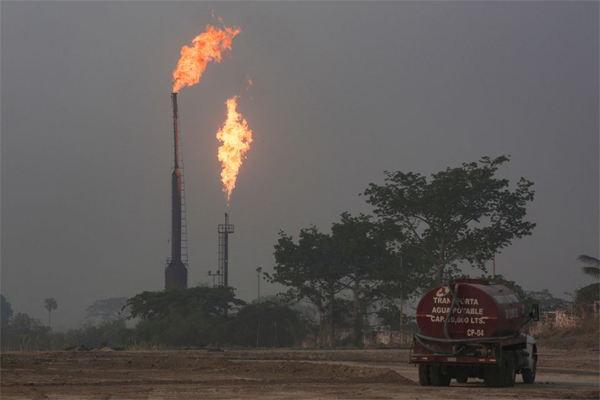
Stefanie Eschenbacher, Reuters
MEXICO CITY
EnergiesNet.com 06 10 2022
Mexican state oil company Petroleos Mexicanos released thousands of tons of methane gas into the atmosphere from an oil and gas platform in the Gulf of Mexico last December, research published on Thursday by the European Space Agency (ESA) showed.
Invisible and odorless, but much more harmful to the environment than carbon dioxide, methane is considered a major driver of global warming.
Two satellites recorded images of methane plumes during one “ultraemission” event between Dec. 8 and Dec. 27, the report found.
Researchers led by Itziar Irakulis Loitxate from the Polytechnic University of Valencia calculated about 4,000 tons of methane were released during that time.
Over those 17 days, Pemex – as the company is known – emitted a quantity of methane equivalent to 3.37 million tons of carbon dioxide or 3% of the country’s annual CO2 emissions.
The Gulf of Mexico leak is likely a result of “abnormal process conditions at the site” like malfunctions or equipment issues, researchers concluded.
Neither Pemex, nor the energy ministry responded to requests for comment.
“These are the first detections made from satellites,” Irakulis Loitxate told Reuters. “Without the monitoring approach described in the paper, similar events would remain invisible and unaccounted.”
The emissions happened near the Mexican state of Campeche, in the Gulf of Mexico at the Zaap oil field that forms part of the Ku-Maloob-Zaap cluster, which produces some 20% of the country’s total oil output. read more
The results are part of a wider study by ESA researchers, who told Reuters the findings demonstrate the growing capabilities to detect and quantify these human-made emissions from space.
Methane is much more powerful at trapping heat than carbon dioxide but only lasts in the atmosphere for about a decade.
To minimize its harmful impact, oil and gas companies aim to flare the methane component of natural gas when comes to the surface as a byproduct of oil production.
Separate satellites detected that a near-constant flare was suddenly absent on Dec. 8, and only sporadically lit up during the “ultraemission” event.
Reporting by Stefanie Eschenbacher; Editing by Stephen Eisenhammer and Bill Berkrot.
reuters.com 06 09 2022











